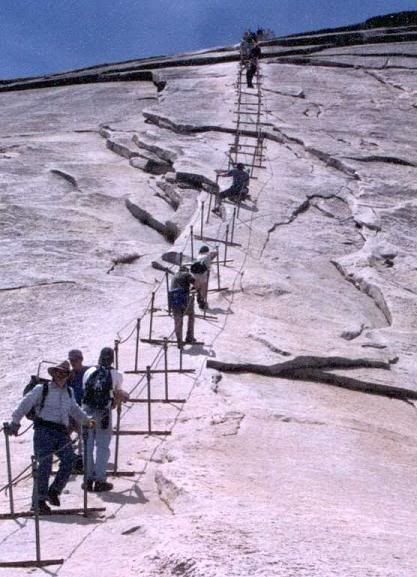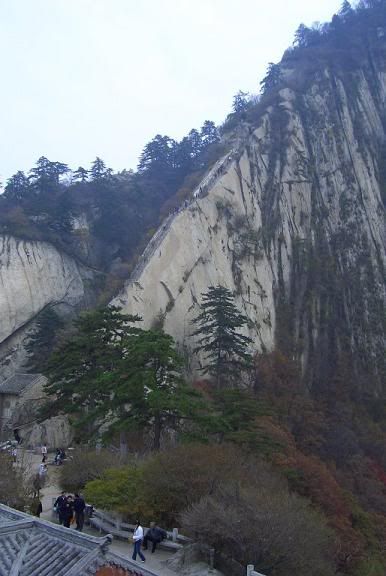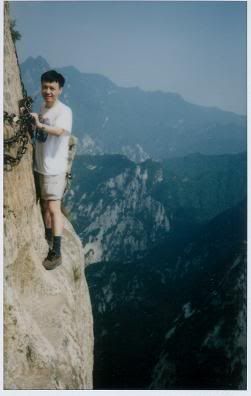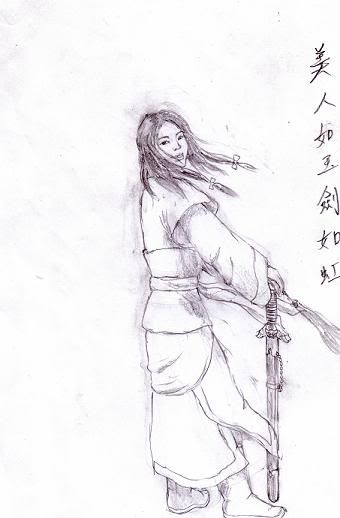華山論劍
The photos of Half Dome immediately gave me a sense of deja vu, sure enough:

Half Dome

華山 (Huashan, or Mt. Hua)

One of 5 mountains that serve as landmarks in China, not particularly high (7,000'), it nevertheless is the most difficult to climb among them. Made famous by the Huashan martial arts school (whose reputation has been blown out of proportion by the novelist Luis Chia), 華山論劍 (discuss swordsmanship at mt. Hua) is now part of day to day Chinese vocabulary.
Huashan school is one of the older internal MA schools, with close tie to Taoism. Stereotypically, it's the pinnacle of Chinese swordsmanship, though its empty-handed forms are more popularly practiced.
At the head of the trail is a sign that request visitors disarm themselves: a humble reminder to potential troublemakers to come in peacefully. The sign also means to tell potential disciples to forget their previous martial art accomplishment, for the school will build them from ground up.
Next, it's the precarious 7,000' ascent. It weeds out the infirm, the wishy-washy, & the cowardly among potential disciples. It also thwarts potential challengers by either wearing them down or deterrng them outright. Once at the summit, most challengers are in no condition to pick a fight, so the host would dictate the terms of reception. Surprsingly, the hosts would treat them with tea, liquor, music, a game of chess, & MA treatises. Such hospitality would usually dissipate all but the worst of hostility.
Huashan school was disbanded under the threat from the Manchu government during Century XVIII CE. This, hoewever, actually served to popularize Huashan MA, for Huashan ceased to be an exclusive club of experts, but spread out among general populace.
華山論劍, discussion of swordsmanship amomg top martial artists on top of Huashan that supposedly took place every 20 years for the last millenium, is purely fictional.

Stereotypical Huashan disciple